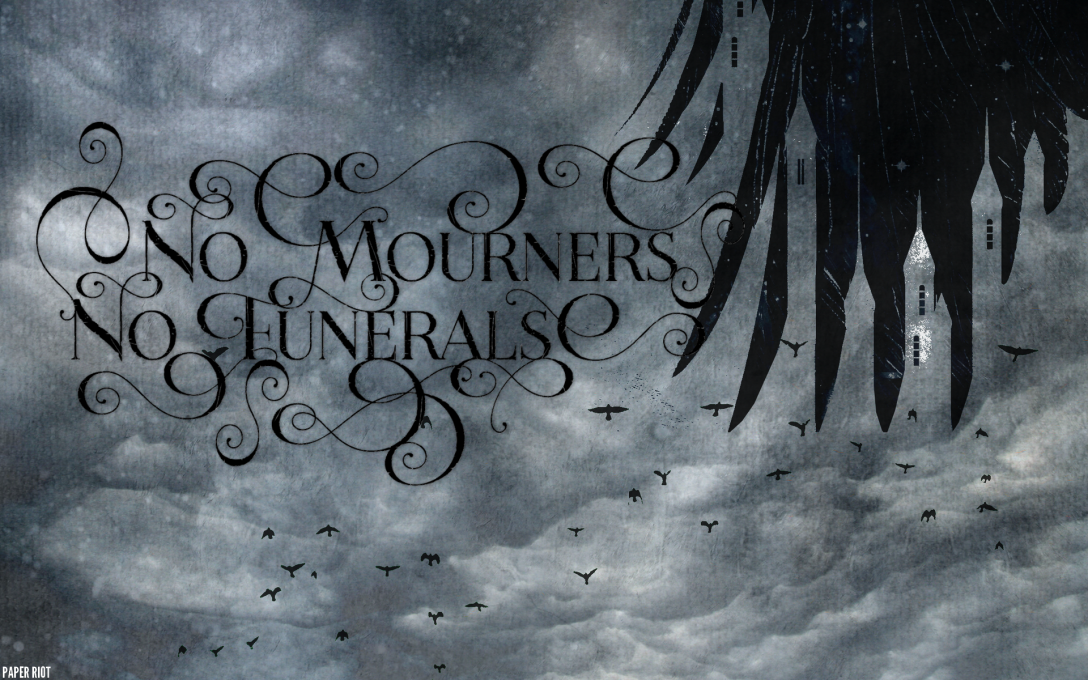Recently, I watched Jordan Harvey’s video on setting. In the video she analyzes the settings in Leigh Bardugo’s work. She covers a lot of good points that ultimately explain why the world setting in Six of Crows is stronger than Shadow and Bone. Why somethings that worked in Shadow and Bone didn’t quite hit the mark in King of Scars. This got me thinking for myself what makes Six of Crows so special. What made the Grisha trilogy less stand out? Now before getting into this I want to state I have only read Shadow and Bone and the Six of Crows duology. Therefore that’s where most of my thoughts are going to come from. Now as usual, I will be honest and will break this down to the bone (pun intended). So if you’re so in love with these series, you can’t stand anyone giving Shadow and Bone harsh critiques. Click away.
Plot:
Shadow and Bone:
Okay, listen, I enjoyed Shadow and Bone. But I’m not going to act like the plot isn’t the run of the mill YA fantasy story I’m pretty much used to by now. Girl finds out she has a special power she must use to save her fictional world because only she can. Despite her instance that she really isn’t or wants to be special. We’ve seen it in Red Queen, Divergent, House of Night, and plenty more. It’s a default. However this alone doesn’t make the book fall flat. It’s in the execution in that it doesn’t deviate enough from the formula. If anything it stays within the perimeters.
Six of Crows series:
Heist plots in YA fantasy is not as popular in my opinion. Maybe it’s just me. But I don’t see a lot of them especially now. So the allure of a heist set in a fantasy world sounds more interesting. Now granted the plot here is slower to start then SAB. But the gathering of all the resources for the heist is a big part of the plot as well. In this book the subplots such as the creation of a super drug to heighten a Grisha’s powers. It is intriguing and makes for a high stakes plot because of the repercussions. It makes the stakes more real and immediate.
Characters:
Shadow and Bone:
Again this is your basic formula. The brown haired heroine who thinks she’s ugly and nothing special, who turns out to be very special. I personally love the discovered powers trope. So I’m not gonna complain too much about that. But I will say this; Alina’s self-loathing almost kills the book. Almost every page, she’s stating how plain, bland, and unworthy she is. And she’s like this almost to the end of the story. Mel is the typical first guy introduced, therefore automatic love interest trope. The Darkling, love him as a character. He shines as an antagonist. But as a love interest, he’s the brooding bad boy second love interest. You know he isn’t a good choice but he has hidden motives.
Six of Crows:
Variety is the spice of life, people. The characters in Six of Crows are so rich and varied as there backgrounds. Kaz the leader of the gang, has a disability, suffering from mental illness but is the mastermind. Wylan, explosions expert, queer, dyslexic, and has a father that cuts him off for his learning disability. Inej trafficked and sold into sex work, becomes one of most feared assassins.
Nina is heart-render that was enslaved but escaped, and went on to make name for herself. Matthias involved in the group of people that enslaved Nina, and her people. Most loyal friend and member of the group. Jesper is the sharp shooter, funny, but is addicted to gambling, and also queer. Do I need to say more? They don’t fit in a box and I haven’t seen too many YA fantasy books with a main cast that has this much diversity in them. Not just for the sake of being diverse but to give a snapshot into their lives. Its easy to see how each element plays into who they are and leads itself into the narrative.
World-building:
Shadow and bone:
Ravka feels distant. I’m not going to go too deeply into this point because Jordan explains this thoroughly in the video I will link below. Instead what I’m going to talk about is how small Ravka in the first book feels. We first go to orphanage which isn’t very well described. The fold is one part of the story that feels very real because of the history behind it and the way Bardugo describes it. Whenever the fold is present in the story, the tone of the narrative changes slightly, it feels menacing and there’s dread hanging in the air. I love it. Then we immediately move to the little palace which is again, vaguely described.
Six of Crows:
The world of Ketterdam is so interesting because it feels vast. The different gangs, and the history of the Dreds, we get to see through Kaz perspective. The story spends a lot time in each character’s perspective to really get to know the world and who they are. It feels personal and less vague because it is a pivotal part of their backstories and the world. This helps to make Ketterdam a vivid living breathing place. It makes the ice court very threatening.
Conclusion: I hope you enjoyed this quick analysis. Watch the video below if you want a more rounded idea of what I was talking about. Have a happy Friday.

